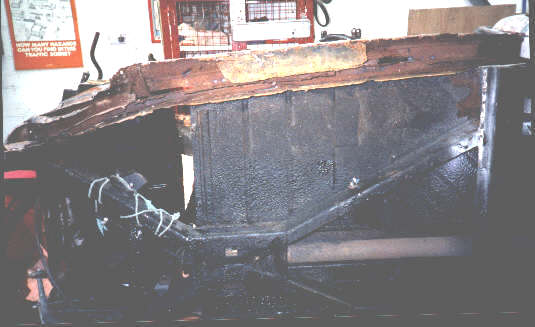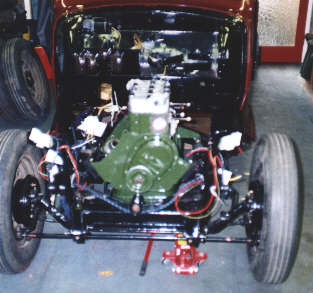
FLYING 12

During the time the Flying 9 was under restoration we had used the Flying 8 to attend local rallies and shows within easy travelling distance of home. However with the “9” now back on the road we were becoming somewhat bored with sitting on rally fields all day, and were looking for something which would enable us to use the cars for longer runs. During this time we had got to know one Terry Oliver, owner of a very nice 1935 Ten, who suggested that we join the Forest of Dean Historic Vehicle Club. The F.D.H.V.C. is open to all makes of cars up to and including 1955, and organises a monthly day trip of around 100/120 miles, to places of interest, plus a annual two day trip. Just the sort of thing we were looking for.
In the early Spring and Autumn when the days are quite short we found that we were often running home in the twilight, which can be a bit hair-raising when we are plodding along at 40/45 mph, less on hills, and everyone else is doing 60/70mph. So we decided we needed something larger and faster for these runs and what else but a Flying 12!
So the search began. Eventually we came across an early 1939 Twelve de Luxe with normal suspension. It looked in reasonable overall condition, with good original seats and interior trim, but without a M.O.T. due to brake problems. One thing we were not happy with however was pop riveted sections under the sills, but never the less they seemed sound, as did the rest of the body. Working on the basis that we could put right any mechanical problems, and after a short run round the block and much haggling it was ours. How wrong we were!
Shortly after purchasing the “12” I started a 2 year restoration course at a Bristol college, at which we could take in our own cars to practice our new found skills on. So after removing the engine, running gear and interior trim, off it went to Bristol. .Job one was to replace the pop rivets in the body sections and weld them into place. So out with the pop rivets and a quick look to see that everything was O.K. underneath. What a surprise, there was nothing underneath except Chicken wire and newspaper, which meant we would have to fabricate whole new sections. Suspicions aroused we went on a thorough check of the rest of the body.
 This car had obviously been in a very serious near
side accident. The front axle had
been re welded together, as had the track rod and steering arm. The front wing
was like a corrugated iron sheet, once we had removed the filler, and only the
paint was holding the back wings together.
So there was nothing for it but to start a rebuild from scratch.
As time went on I teamed up with a fellow course member by the name of Adrian
and we became a two man team working on the car full time at college.
Fortunately we had completed the major bodywork before the course
finished so the remainder of the bodywork was easily done at home.
This car had obviously been in a very serious near
side accident. The front axle had
been re welded together, as had the track rod and steering arm. The front wing
was like a corrugated iron sheet, once we had removed the filler, and only the
paint was holding the back wings together.
So there was nothing for it but to start a rebuild from scratch.
As time went on I teamed up with a fellow course member by the name of Adrian
and we became a two man team working on the car full time at college.
Fortunately we had completed the major bodywork before the course
finished so the remainder of the bodywork was easily done at home.
By this time nothing surprised us, even when we found that the con-rod little end bearing’s had disappeared a long time ago and new con-rods were required. At the present time the body has had a bare metal respray, with a replacement front axle from a 1936 “12”, new track rod ends, the engine has been completely rebuilt and refitted in the chassis, and we are in the process of sorting out where all the wires in the replacement loom go!